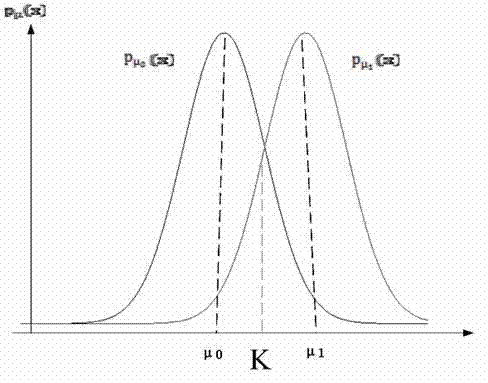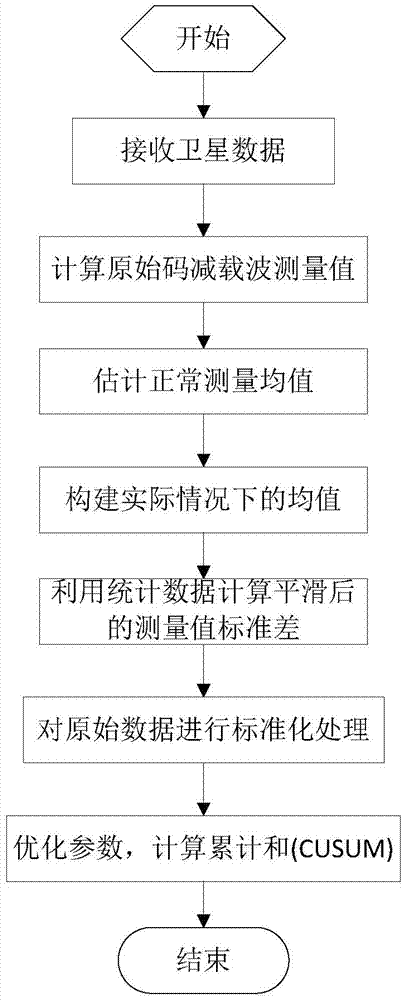Ionospheric storm monitoring algorithm based on code and carrier separation
An ionosphere, carrier technology, applied in the field of satellite navigation, can solve the problem that the monitoring system is difficult to meet the monitoring ability and other problems
- Summary
- Abstract
- Description
- Claims
- Application Information
AI Technical Summary
Problems solved by technology
Method used
Image
Examples
Embodiment Construction
[0018] The present invention will be further described below in conjunction with the accompanying drawings and embodiments, and the present invention includes but not limited to the following embodiments.
[0019] The invention is a calculation method for monitoring ionospheric abnormalities by using code-subtracted carrier, which can detect possible abnormal conditions in the ionosphere in LAAS and give alarm information in time.
[0020] The CUSUM method can achieve the theoretical minimum detection time by changing some parameters in the random process. This method is based on two assumptions: 1. The input of CUSUM obeys Gaussian distribution, and the measured values at each moment are independent of each other; 2. The mean and variance are known when no fault occurs.
[0021] Consider a sequence of Gaussian random variables x(k), whose probability density function (PDF) can be expressed as
[0022] p μ ( ...
PUM
 Login to View More
Login to View More Abstract
Description
Claims
Application Information
 Login to View More
Login to View More - R&D
- Intellectual Property
- Life Sciences
- Materials
- Tech Scout
- Unparalleled Data Quality
- Higher Quality Content
- 60% Fewer Hallucinations
Browse by: Latest US Patents, China's latest patents, Technical Efficacy Thesaurus, Application Domain, Technology Topic, Popular Technical Reports.
© 2025 PatSnap. All rights reserved.Legal|Privacy policy|Modern Slavery Act Transparency Statement|Sitemap|About US| Contact US: help@patsnap.com



